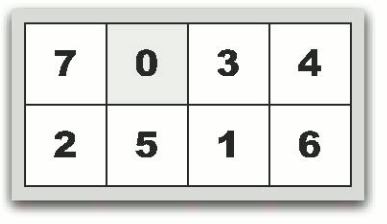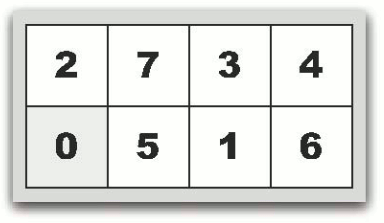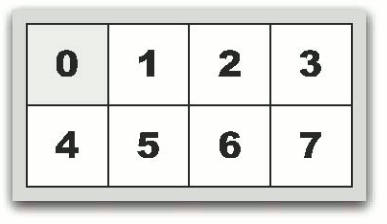描述
Given a number of distinct decimal digits, you can form one integer by choosing a non-empty subset of these digits and writing them in some order. The remaining digits can be written down in some order to form a second integer. Unless the resulting integer is 0, the integer may not start with the digit 0.
For example, if you are given the digits 0, 1, 2, 4, 6 and 7, you can write the pair of integers 10 and 2467. Of course, there are many ways to form such pairs of integers: 210 and 764, 204 and 176, etc. The absolute value of the difference between the integers in the last pair is 28, and it turns out that no other pair formed by the rules above can achieve a smaller difference.
 (a) 0 7 3 4 2 5 1 6 の場合
(a) 0 7 3 4 2 5 1 6 の場合 (b) 7 0 3 4 2 5 1 6 の場合
(b) 7 0 3 4 2 5 1 6 の場合
